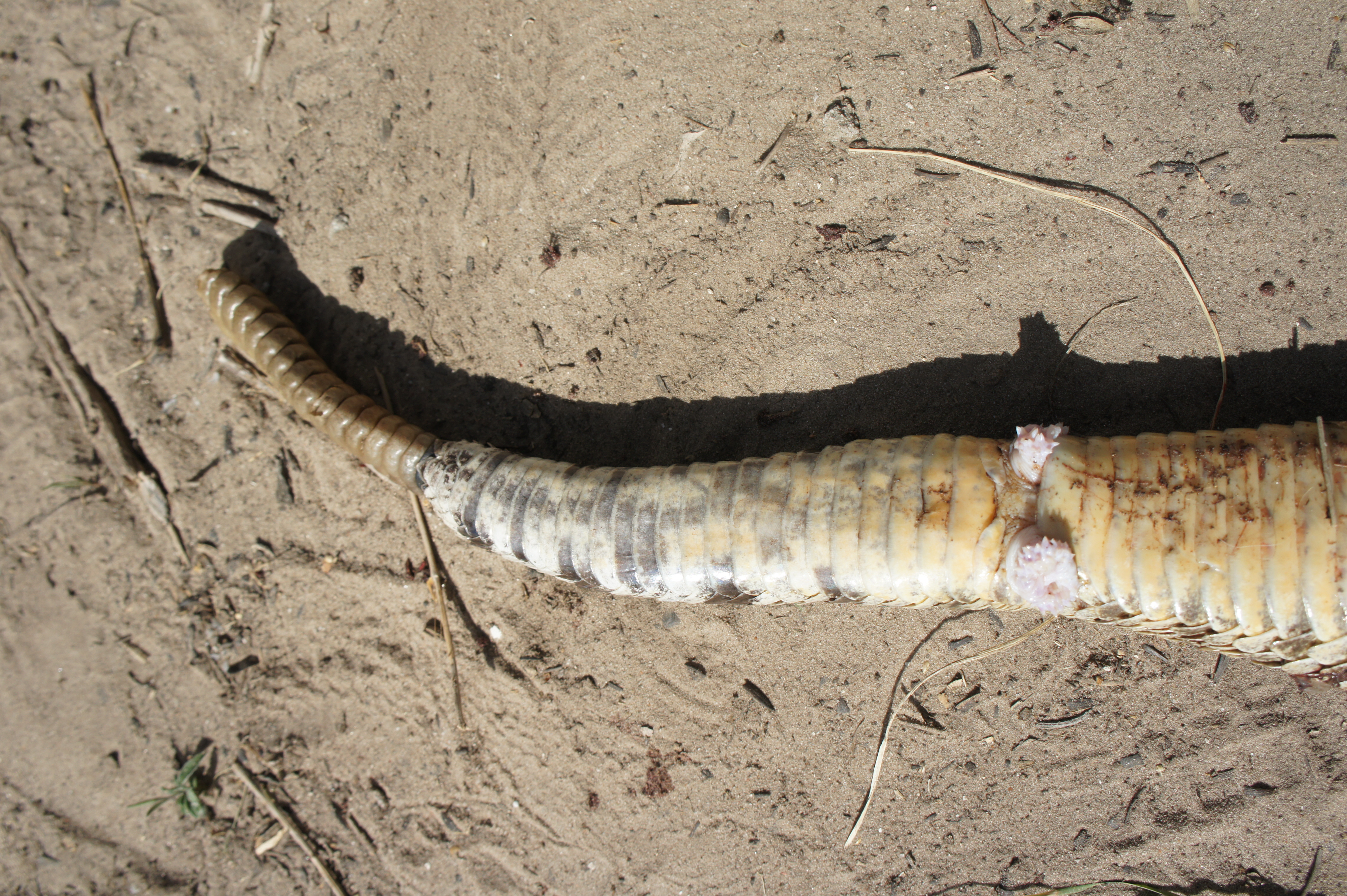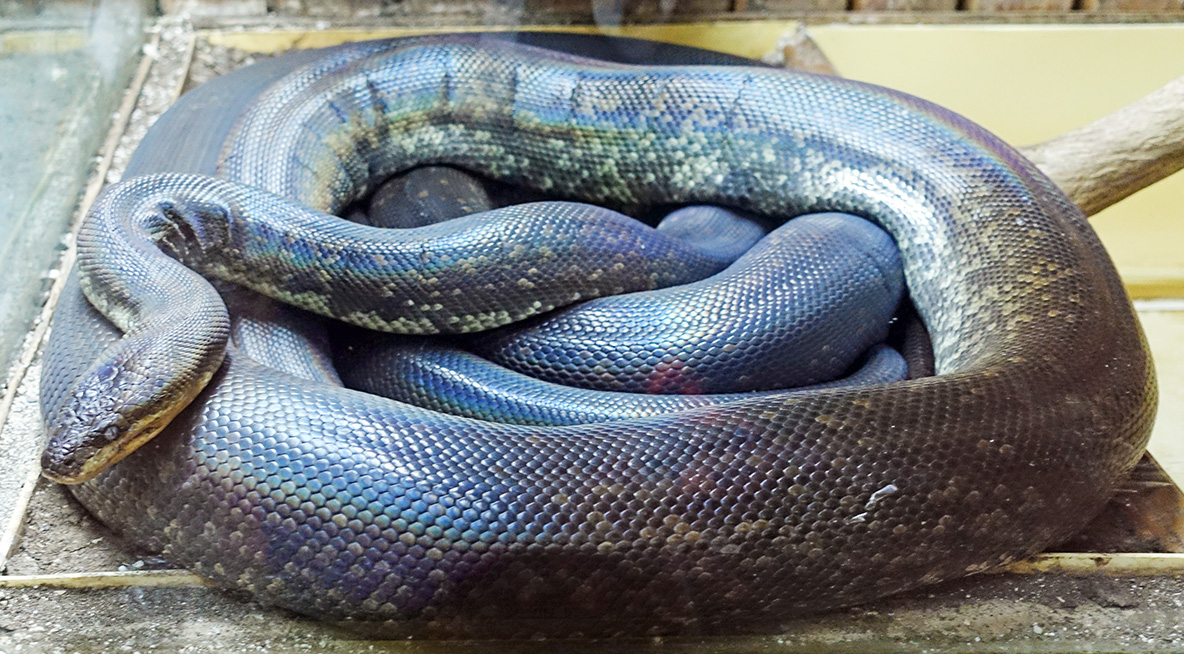|
Bluff Downs Giant Python
The Bluff Downs giant python (''Liasis dubudingala'') is an extinct species of snake from Queensland, Australia, that lived during the Early Pliocene. Named in 2002, ''Liasis dubudingala'' was likely the biggest snake found in Australia, with a total length of up to . This length rivals the largest extant snake species, the reticulated python from Asia and the green anaconda from South America. It may have fed on larger prey such as juvenile diprotodontids, but it is also possible that it was a skilled climber capable of catching birds and arboreal marsupials. History and naming The first fossil remains of ''Liasis dubudingala'' were discovered in 1975 by Australian paleontologist Mike Archer in the early Pliocene sediments of the Allingham Formation, Queensland. The trunk vertebra was initially assigned to the genus ''Morelia'' by Archer, but later research found sufficient evidence to assign the material to the genus ''Liasis'', with Scanlon and Mackness erecting a new species ... [...More Info...] [...Related Items...] OR: [Wikipedia] [Google] [Baidu] |
Pliocene
The Pliocene ( ; also Pleiocene) is the epoch (geology), epoch in the geologic time scale that extends from 5.33 to 2.58See the 2014 version of the ICS geologic time scale million years ago (Ma). It is the second and most recent epoch of the Neogene Period in the Cenozoic, Cenozoic Era. The Pliocene follows the Miocene Epoch and is followed by the Pleistocene Epoch. Prior to the 2009 revision of the geologic time scale, which placed the four most recent major glaciations entirely within the Pleistocene, the Pliocene also included the Gelasian Stage, which lasted from 2.59 to 1.81 Ma, and is now included in the Pleistocene. As with other older geologic periods, the Stratum, geological strata that define the start and end are well-identified but the exact dates of the start a ... [...More Info...] [...Related Items...] OR: [Wikipedia] [Google] [Baidu] |
Alveoli
Alveolus (; pl. alveoli, adj. alveolar) is a general anatomical term for a concave cavity or pit. Uses in anatomy and zoology * Pulmonary alveolus, an air sac in the lungs ** Alveolar cell or pneumocyte ** Alveolar duct ** Alveolar macrophage * Mammary alveolus, a milk sac in the mammary glands * Alveolar gland * Dental alveolus, also known as "tooth socket", a socket in the jaw that holds the roots of teeth ** Alveolar ridge, the jaw structure that contains the dental alveoli ** Alveolar canals ** Alveolar process * Arteries: ** Superior alveolar artery (other) *** Anterior superior alveolar arteries *** Posterior superior alveolar artery ** Inferior alveolar artery * Nerves: ** Anterior superior alveolar nerve ** Middle superior alveolar nerve ** Inferior alveolar nerve Uses in botany, microbiology and related disciplines * Surface cavities or pits, such as on the stem of Myrmecodia species * Pits on honeycombed surfaces such as receptacles of many angiosperms * P ... [...More Info...] [...Related Items...] OR: [Wikipedia] [Google] [Baidu] |
Python (genus)
''Python'' is a genus of constricting snakes in the Pythonidae family native to the tropics and subtropics of the Eastern Hemisphere. The name ''python'' was proposed by François Marie Daudin in 1803 for non-venomous flecked snakes. Currently, 10 python species are recognized as valid taxa. Three formerly considered python subspecies have been promoted, and a new species recognized. Taxonomy The generic name ''Python'' was proposed by François Marie Daudin in 1803 for non-venomous snakes with a flecked skin and a long split tongue. In 1993, seven python species were recognized as valid taxa. On the basis of phylogenetic analyses, between seven and 13 python species are recognized. Distribution and habitat In Africa, pythons are native to the tropics south of the Sahara, but not in the extreme south-western tip of southern Africa (Western Cape) or in Madagascar. In Asia, they occur from Bangladesh, Nepal, India, Pakistan, and Sri Lanka, including the Nicobar Islands, ... [...More Info...] [...Related Items...] OR: [Wikipedia] [Google] [Baidu] |
Sensu Lato
''Sensu'' is a Latin word meaning "in the sense of". It is used in a number of fields including biology, geology, linguistics, semiotics, and law. Commonly it refers to how strictly or loosely an expression is used in describing any particular concept, but it also appears in expressions that indicate the convention or context of the usage. Common qualifiers ''Sensu'' is the ablative case of the noun ''sensus'', here meaning "sense". It is often accompanied by an adjective (in the same case). Three such phrases are: * – "in the strict sense", abbreviation ''s.s.'' or ''s.str.''; * – "in the broad sense", abbreviation ''s.l.''; * – "in a relaxed, generous (or 'ample') sense", a similar meaning to ''sensu lato''. Søren Kierkegaard uses the phrase ''sensu eminenti'' to mean "in the pre-eminent r most important or significantsense". When appropriate, comparative and superlative adjectives may also be used to convey the meaning of "more" or "most". Thus ''sensu stricto' ... [...More Info...] [...Related Items...] OR: [Wikipedia] [Google] [Baidu] |
Hemipenis
A hemipenis (: hemipenes) is one of a pair of intromittent organs of male squamates (snakes and lizards). Hemipenes are usually held inverted within the body, and are everted for reproduction via erectile tissue, much like that in the human penis. They come in a variety of shapes, depending on species, with ornamentation such as spikes. Background The hemipenis is the intromittent organ of Squamata, which is the second largest order of vertebrates with over 9,000 species distributed around the world. They differ from the intromittent organs of most other amniotes such as mammals, archosaurs and turtles that have a single genital tubercle, as squamates have paired, separate genitalia. Squamate hemipenes also develop from a different cell origin, originating from the same embryonic cells that produce the limbs, whereas mammalian penises arise from the embryonic cells that develop the tail. Evolution Much debate continues regarding the evolutionary origin of hemipenes and their ... [...More Info...] [...Related Items...] OR: [Wikipedia] [Google] [Baidu] |
Liasis
''Liasis'' is a genus of snakes in the Family (biology), family Pythonidae. Species of the genus ''Liasis'' are native to Indonesia, New Guinea and Australia. Currently, three Extant taxon, extant species are recognized, and one giant fossil species Bluff Downs giant python, ''L. dubudingala'' is estimated to have been around 10 m (33 ft) in length. Geographic range ''Liasis'' species are found in Indonesia in the Lesser Sunda Islands, east through New Guinea and in northern and western Australia. Species )*Not including the nominotypical subspecies, nominate subspecies )TType species References External links * Liasis, Snake genera Taxa named by John Edward Gray {{Snake-stub ... [...More Info...] [...Related Items...] OR: [Wikipedia] [Google] [Baidu] |
Apodora
''Apodora papuana'' is a species of python, commonly known as the Papuan python, Irian python or Papuan olive python. It is found in New Guinea. It is the only species in the genus ''Apodora''. No subspecies are currently recognized. Description The Papuan python is a large snake, with adults growing to an average length of and some specimens growing to lengths of over . However, they are not nearly as heavy-bodied as most other pythons, typically weighing only about . The available information about the species size is limited. They are noted for having the ability to change color, though the exact mechanism and reasons for it are not completely understood. The color is reputed to change when the snake is agitated. They can vary from black to a mustard yellow, but are normally an olive green in appearance when young and dark olive when older, with the sides and underside distinctly lighter. Distribution and habitat Papuan pythons are found in most of New Guinea, from Misool to ... [...More Info...] [...Related Items...] OR: [Wikipedia] [Google] [Baidu] |
Leiopython
''Leiopython'' is a genus of snakes in the family Pythonidae. Species The genus ''Leiopython'' contains the following species: *''L. albertisii'' – D'Albertis' python, northern white-lipped python *'' L. fredparkeri'' – Karimui Basin white-lipped python, southern white-lipped python *'' L. biakensis'' – Biak white-lipped python ''Nota bene'': A binomial authority in parentheses indicates that the species was originally described in a genus other than ''Leiopython''. Description Female adults of the northern white-lipped python (''L. albertisii)'' grow to an average of about 213 cm (6–7 ft) in total length (including tail), whereas the southern white-lipped python (''L. fredparkeri)'' can reach up to in total length. Both species are patternless, except the northern white-lipped python has some light markings on its postoculars, Mehrtens JM (1987). ''Living Snakes of the World in Color''. New York: Sterling Publishers. 480 pp. . which are absent in the s ... [...More Info...] [...Related Items...] OR: [Wikipedia] [Google] [Baidu] |
Antaresia
''Antaresia'' is a genus of pythons, nonvenomous snakes in the Family (biology), family Pythonidae. The genus is native to Australasia. The genus is known by the common name Children's pythons, the name of the type species, ''Antaresia childreni''. John Edward Gray, Gray named ''A. childreni'' in honour of his mentor, John George Children, who was a curator of the zoological collection at the British Museum around that time. It contains the smallest members of the Pythonidae. Four species and two subspecies are recognized, although they were all considered part of the same species until recently. A newly described form called the pygmy banded python may be a distinct species, but analysis has not yet been performed on this animal. The largest recorded examples of ''Antaresia'' species have all been males, suggesting males of the known species in this genus may compete for females. This behavior has never been witnessed in the wild, and has only been witnessed in captive specimens. ... [...More Info...] [...Related Items...] OR: [Wikipedia] [Google] [Baidu] |
Yurlunggur
''Yurlunggur'' is a genus of fossil snake in the extinct family Madtsoiidae containing the species ''Yurlunggur camfieldensis'' known from the Oligocene and Miocene of Australia''.'' ''Y. camfieldensis'' was a large apex predator that typically reached in length, with one vertebra from the Wyandotte Creek suggesting a maximum length of . It is closely related to ''Wonambi naracoortensis'', present in Australia during the Pleistocene. The name of the genus is derived from traditional name given by the people of Arnhem Land to the Rainbow serpent. They closely resemble ''Varanus'' (monitors) more than small burrowing lizards. John D. Scanlon, John Scanlon has presented this as evidence of descent from the former, rather than burrowing ancestors that evolved into the elongate and legless snakes. The fossil material described by this species includes a rare example of a complete skull and mandible, often crushed in the fossilisation process, that was preserved in the soft limesto ... [...More Info...] [...Related Items...] OR: [Wikipedia] [Google] [Baidu] |
Madtsoiidae
Madtsoiidae is an extinct family of mostly Gondwanan snakes with a fossil record extending from early Cenomanian (Upper Cretaceous) to late Pleistocene strata located in South America, Africa, India, Australia and Southern Europe. Madtsoiidae include very primitive snakes, which like extant boas and pythons would likely dispatch their prey by constriction. Genera include some of the longest snakes known such as '' Vasuki'', measuring at least long, and the Australian '' Wonambi'' and '' Yurlunggur''. As a grouping of basal forms the composition and even the validity of Madtsoiidae is in a state of flux as new pertinent finds are described, with more recent evidence suggesting that it is paraphyletic as previously defined. Although madtsoiids persisted on Australia until the Pleistocene, they largely went extinct elsewhere during the Eocene. However, some species persisted in South America and India through the Oligocene. Description Madtsoiidae was first classified as a sub ... [...More Info...] [...Related Items...] OR: [Wikipedia] [Google] [Baidu] |




